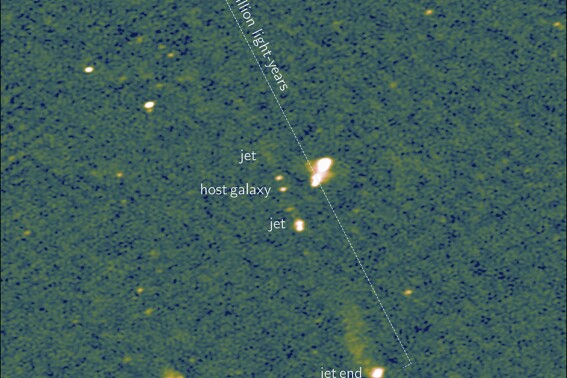Archaeologists have made an extremely rare discovery during excavations of an ancient cemetery in Poland.
Recent investigations in the town of Kazimierza Wielka—located in the south of the country around 28 miles northeast of Kraków—unearthed the remains of 160 objects from the Neolithic period and early Bronze Age, as well as the ancient cemetery, which dates to the late pre-Roman and early Roman period, so roughly the 1st century B.C. to the 2nd century A.D.
Over three excavation seasons, archaeologists from the Institute of Archaeology at the Jagiellonian University and the archaeological company Pryncypat, identified 23 inhumation burials—where bodies were placed in the ground—and four cremation burials at the cemetery.
One of the cremation burials, discovered in mid-August this year, was particularly intriguing, with archaeologists finding that the burnt human remains had been placed in a bronze vessel of Roman origin.
The bucket-shaped vessel, known in Latin as a situla, was used as an urn—i.e. a container for human remains burned on a funeral pyre—Joanna Zagórska-Telega, one of the leaders of the excavation with the Institute of Archaeology at the Jagiellonian University, told Newsweek.
"The situla has survived almost intact, with elaborately cast dolphin-shaped handle attachments…Three legs in the shape of stylized dolphins have also survived at the base," Zagórska-Telega said.
While the exact age of this particular cremation vessel has not yet been confirmed, previously discovered vessels of the type found in Kazimierza Wielka have been dated to the 1st century B.C. and the 1st century A.D. Such vessels are extremely rare finds in Poland.
There is no consensus among scholars as to where they were made, although workshops in northern Italy or the eastern Alps are currently the most widely accepted hypothesis. Early forms of bronze vessels, including situlae with dolphin-shaped attachments, entered the Barbaricum—i.e. the area north of the Roman frontier, which included what is now Poland—mainly through trade, according to Zagórska-Telega.
The exceptional preservation of the Roman vessel from Kazimierza Wielka makes the latest discovery unusual.
"Several dozen vessels, or fragments of vessels, of this type are known from all over Europe, but only a handful of them have been completely preserved in as good a condition as the situla from Kazimiera Wielka," Zagórska-Telega said.
"Most of them were discovered by chance in the 19th and early 20th centuries, and only a few were found during regular excavations by archaeologists, i.e. in circumstances that allowed the entire context of the find to be studied. This is why the Kazimiera Wielka find is of such scientific importance."
The metallic structure of the vessel will now be subjected to analysis prior to conservation treatment in order to determine how it was made.
Researchers will also conduct an anthropological analysis of the burnt human bones inside the vessel to determine, among other things, the age and sex of the person buried.
Based on the contextual evidence, it can be assumed that the deceased was a male warrior, according to Zagórska-Telega. This is suggested by pieces of iron weaponry found next to the urn.
These objects, which included a sword, spearheads and shield fittings, were ritually bent and deliberately burnt on the funeral pyre. Certain stylistic features of the weapons indicate that the burial probably dates from the 1st century B.C.
"The custom of ritually destroying weapons and placing them in the grave with the deceased warrior is characteristic of the peoples inhabiting the European Barbaricum during the last three centuries B.C. and the first centuries A.D.," Zagórska-Telega said.
Evidence of such customs is particularly widespread in the cemeteries of the ancient Przeworsk culture, which developed in what is now central and southern Poland between the 3rd century B.C. and the mid-5th century A.D.
"The Przeworsk culture is associated with the Lugii and the Vandals, peoples mentioned in ancient written sources," Zagórska-Telega said. "In the last centuries B.C., this culture was strongly influenced by the Celts, who were the dominant power in much of central Europe at the time. It was probably through the Celtic environment that the situla discovered in Kazimierza Wielka reached the area occupied by the Przeworsk culture."
Do you have a tip on a science story that Newsweek should be covering? Do you have a question about archaeology? Let us know via science@newsweek.com.
Disclaimer: The copyright of this article belongs to the original author. Reposting this article is solely for the purpose of information dissemination and does not constitute any investment advice. If there is any infringement, please contact us immediately. We will make corrections or deletions as necessary. Thank you.



